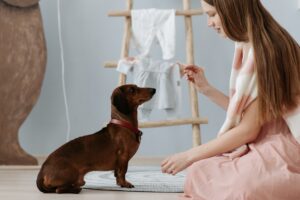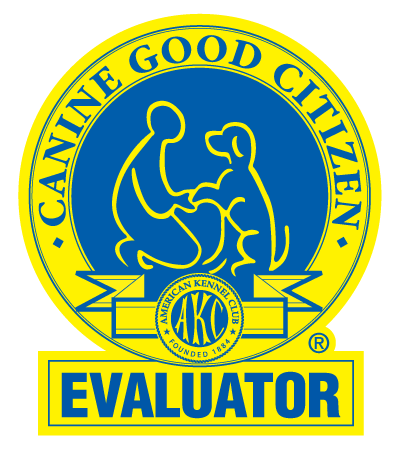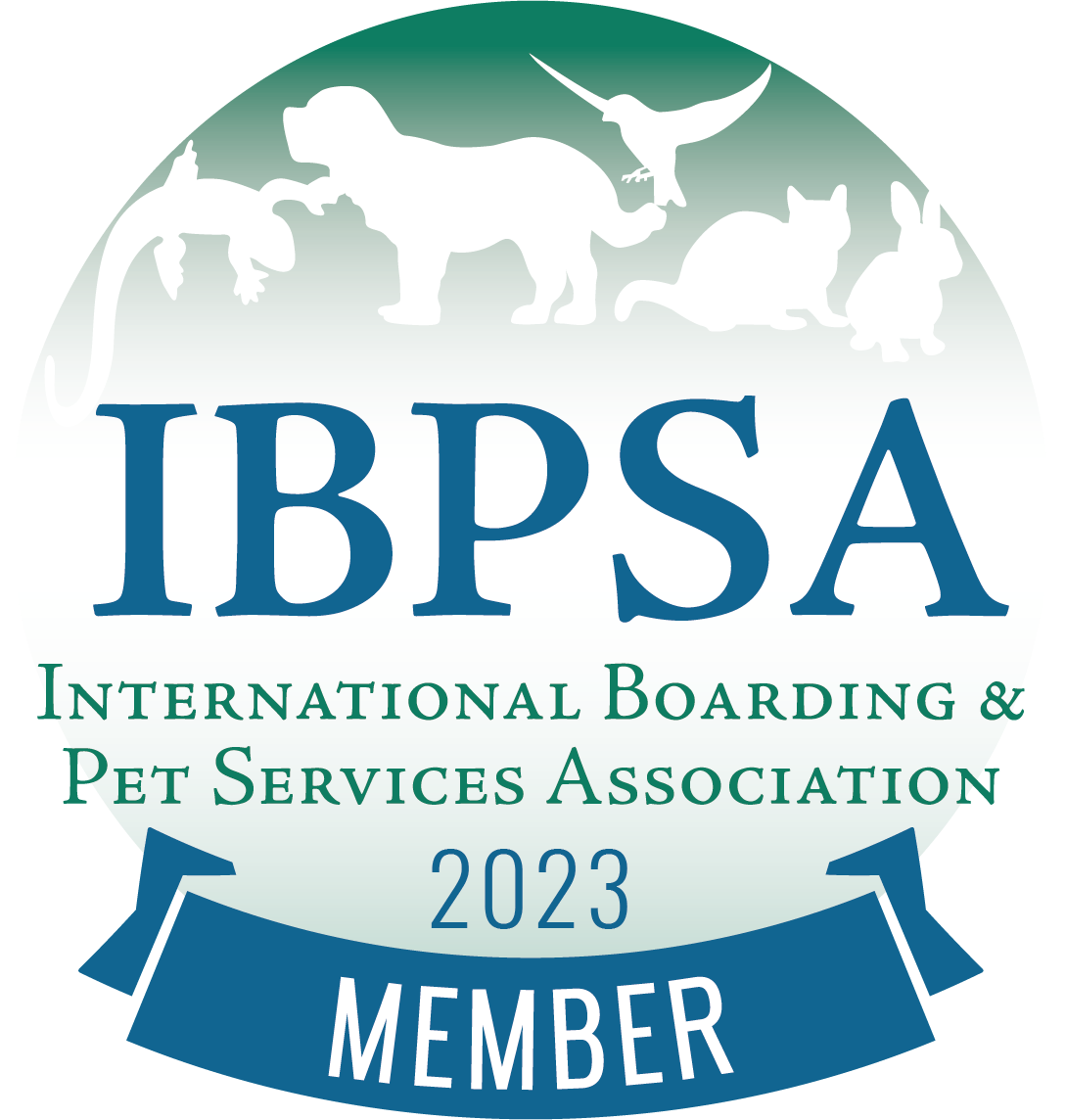Embracing a new puppy is undeniably an exciting experience for all. Amidst the joy, it’s crucial to recognize the significance of initiating puppy training while they are still in their early stages. Common questions posed to dog trainers revolve around the timing of puppy training—questions like, “When should I start training my puppy?” or “Is my puppy too young for training?” In this blog post, we aim to delve into the essentials and key considerations for effectively navigating the journey of puppy training.

When to Start Puppy Training?
The ideal time to begin puppy training is immediately. Even at 8 weeks old (around 2 months), your puppy is ready to absorb essential skills, particularly during its socialization period. It’s worth noting that progress might seem gradual initially, but laying down these foundational aspects is exceptionally important. Comparing it to raising human children, just as parents encourage polite words like “Please” or “Thank you” before a child can speak, establishing habits early is necessary for puppies.
Fear Periods
Puppies experience about 4 fear periods during their developmental stages, occurring approximately at the following ages:
- Between 8 – 10 weeks
- Between 4 – 6 months
- About 9 months
- Between 14 – 18 months
This phase is significant for a puppy’s development, and mishandling it can lead to various concerning issues, with reactivity being a significant concern. When your puppy enters a fear period, they may suddenly become frightened of something they were previously okay with or used to ignore. This could manifest through behaviors like hunching down, shaking, backing away, hiding, running away, or submissively urinating. More pronounced behaviors may include growling, barking, piloerection (raising hackles), or showing teeth.
Regardless of the specific behavior, once you notice these signs within the mentioned age ranges, it’s essential to take a step back. Slow down, revisit basic training, and proceed at your dog’s pace. Consider practicing self-soothing skills in a safe and calm environment during these periods.
Understanding and navigating fear periods are instrumental in shaping your puppy’s development. Effective training and proper socialization during these times can make a significant difference, determining whether your puppy grows into a confident and happy companion or a scared, timid, and reactive dog.

Socialization Period (3-12 Weeks)
The socialization period, spanning from 3 to 12 weeks, is a pivotal stage in a puppy’s development. Understanding this phase is pivotal, especially since most puppies transition to their new homes between 7 to 12 weeks, making rapid changes inevitable.
Between 3 and 5 weeks, puppies become aware of their surroundings and establish connections with people. This period involves familiarizing them with everyday household sounds like TVs, vacuum cleaners, telephones, etc.
Puppies are in the early stages of interacting with each other, playing, developing social skills, and exploring their relationships with siblings and their mother. Curiosity and biting skills are on the rise, with nipping behaviors being practiced during interactions with their mother and littermates.
By 7-9 weeks, puppies have fully utilized their senses and are ready to join their new homes—perhaps, your home! Bringing your pup home within this 7-12 week range, ideally around 9-12 weeks, aligns with the middle of their socialization period. Introducing your puppy to new dogs, people, objects, and surroundings is vital during this time. However, ensure it’s done in a controlled manner to avoid putting your puppy in potentially harmful situations. Moderation is key!
This period is an opportunity for crate training due to various reasons. Puppies are now old enough to adapt to being left alone, preventing separation anxiety, and are capable of house training. Crate training also safeguards your possessions, even if your home is puppy proofed.
During this developmental phase, puppies establish more consistent reactions to stimuli. They tend to focus on different types of people, becoming friendlier and more approachable to strangers. The phase also sees an increased emphasis on practicing biting skills, necessitating early management.
Puppies become more curious, exploring their environment extensively. Be prepared by keeping your puppy close and possibly leashed or behind a barrier like a baby gate. This period is prime for training, with puppies capable of learning basics like sit, down, and their name. It’s also an excellent time to introduce the initial phases of “The Big 3” (Leave it, Recall, Place) and establish boundaries such as sitting at the door, avoiding jumping, managing impulses during feeding, and introducing leash walking through short practice bouts.
With these foundational elements in place, the transition into the testing period becomes more manageable!
Testing Period (3-6 Months)
Between 3 to 6 months, your puppy enters a phase where they start pushing boundaries in their world. Testing limits with both owners and other animals becomes a common behavior. During this period, adult dogs often step in to enforce manners, and problematic behaviors may surface. While attending a positive training class is beneficial, it’s equally vital to engage in regular (daily) practice at home.
Teething is a common occurrence at this age, and chewing becomes a prevalent side effect. To prevent your puppy from targeting your furniture, consider the following tips:
- Avoid leaving your puppy unattended.
- Ensure they have plenty of chew sticks and toys.
- Use commercial sprays or gels to deter them from chewing belongings.
If your puppy is teething and experiencing discomfort, try freezing a carrot or banana for them to chew on. This provides relief to sore gums without posing harm, and teething generally concludes around 6 months when the upper fangs (canines) come in.
While chewing is a natural urge that can persist into adulthood, establishing early standards on permissible items is highly beneficial. Redirect your dog’s chewing habits by introducing various toys with different tastes, odors, and textures to identify their preferences.
Consider durable rubber toys designed to be filled with food or treats, providing an engaging chewing experience. Flavored products that can be stuffed into toys, along with freezing them, enhance their interest and longevity. If you’re seeking ways to keep your dog entertained when unable to supervise, consider incorporating meals into feeding toys, allowing them to work for their food.
However, be cautious with certain products, as aggressive chewers might break off pieces and ingest them. Tailor your choice of toys to your dog’s chewing habits. If your dog is an aggressive chewer, opt for hard plastic toys, and products like Bark Box’s super chewer box can be a suitable choice.
Maintaining a balance is important, as excessively hard toys may risk breaking teeth. Reading reviews and exploring alternative options is recommended if this concerns you. Another strategy to discourage undesirable chewing and promote dental hygiene is to provide toys, food, and treats designed for chewing and gnawing. Choose items with textures and consistencies that encourage chewing, while avoiding those that can be swallowed whole or break apart easily.
Supervision is key to ensure your puppy is encouraged to chew on designated toys and discouraged from chewing on other objects. When unsupervised, restrict access to objects or areas prone to chewing.

Adolescence (6-18 Months)
Entering adolescence can be the most challenging phase in a puppy’s development. As your puppy evolves into a teenager, hormonal changes occur, potentially leading to shifts in behavior during the journey to sexual maturity. Unlike humans, dogs go through adolescence earlier, with small breeds experiencing it as early as 6 months, while larger dogs may start around 9 or 10 months. Larger breeds may continue through adolescence until they are 2 or 3 years old, while smaller dogs typically reach maturity around 18 months. The larger the dog, the slower the development.
Training becomes especially vital during this time, although it may feel like you’re taking steps back. This period is when the early training efforts truly pay off. Consider revisiting a training class or repeating a program like Bark University, especially if you have a subscription, to stay fresh and reinforce previous learning.
Signs of Puberty in Canines:
Males:
- Descent of the testicles
- Scent marking
- Raising leg to mark (pee)
- Becoming less friendly or welcoming, more standoffish
- Increased interest in roaming and decreased interest in listening
- May start lifting leg indoors
- Can become reactive towards other male dogs
Females:
- Typically starts with the first heat cycle
- Exhibits erratic behavior
- Moodiness
- Lethargy
- Shows reactivity
These signs may vary in intensity or may not all be observed. Additionally, other characteristic behaviors of adolescent dogs include inappropriate chewing (furniture, shoes), resource guarding bed or couch areas, starting to pee and/or poop indoors, displaying aggressive behavior towards people or other dogs, resource guarding, lack of response to known human cues, lack of focus and concentration (especially during training sessions), and guarding tendencies in certain breeds.
Most of these behaviors tend to diminish as your puppy matures, provided you maintain consistent training and socialization through these periods. Handling an adolescent dog involves providing ample daily exercise and maintaining regular positive training sessions. Consistency and routine are key. If your dog displays aggressive behavior, it’s advisable to consult with your veterinarian, a dog trainer, or a behaviorist for guidance.
Conclusion:
Understanding your puppy’s developmental stages and implementing consistent training and socialization will result in a well-behaved, confident adult dog. PawHootz Pet Resort is also holding a FREE Puppy Seminar on January 29th , 2024, with an additional 10% off coupon for training retail for attendees. Here you will be able to learn more about how to manage your puppy and train it effectively.
Do not hesitate to contact our staff if you have any questions; we are happy to help!
Contact Us
Learn more: www.pawhootz.com
Email us: play@pawhootz.com or call us at 817-498-6410
Make an appointment with us: https://pawhootz.com/make-an-appointment/



